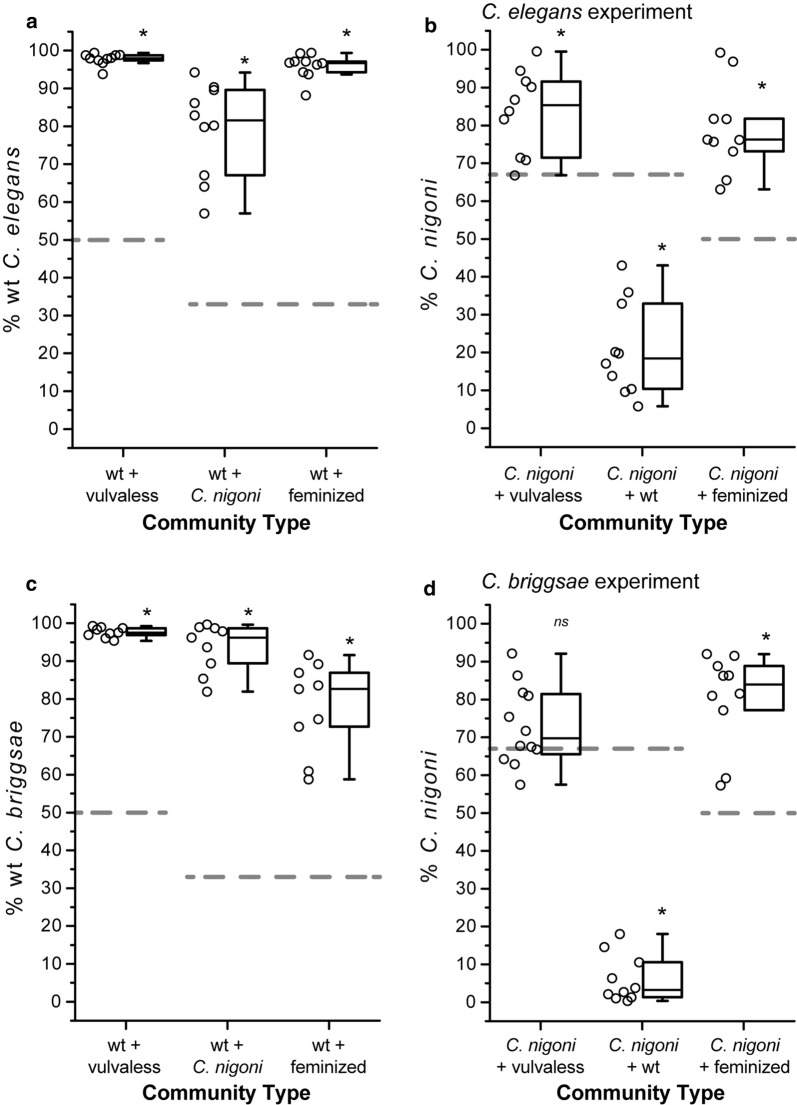Fig. 2.
Relative frequencies of species and strain phenotypes changed in communities over time. Frequencies of species and strain phenotypes in mixed communities after six generations for experimental blocks with C. elegans (a, b) and C. briggsae (c, d). Wildtype (wt) strains of C. elegans increased in frequency regardless of which other strain phenotype or species they were paired with (a community mix with vulvaless t(9) = 42.07, P ≤ 0.001; C. nigoni t(9) = 10.19, P ≤ 0.001; feminized t(9) = 30.57, P ≤ 0.001), as was also true for C. briggsae (c community mix with vulvaless t(9) = 37.71, P ≤ 0.001; C. nigoni t(9) = 18.02, P ≤ 0.001; feminized t(9) = 10.82, P ≤ 0.001). By contrast, the feminized phenotype of both C. elegans and C. briggsae declined in frequency when grown with C. nigoni (b C. elegans t(9) = − 5.82, P ≤ 0.001; d C. briggsae t(9) = − 7.12, P ≤ 0.001). We observed lower frequencies of vulvaless C. elegans hermaphrodites when mixed with C. nigoni, as well (b t(9) = − 4.23, P = 0.002), although the relative frequency of vulvaless C. briggsae was not significantly reduced over time when reared with C. nigoni (d t(11) = − 2.11, P = 0.059). Asterisks (*) indicate significant differences (α = 0.05) between starting phenotype frequencies (dashed lines) and ending phenotype frequencies (ns indicates P > 0.05) from one-sample t-tests after arcsin transform. The values shown for the “wt + C. nigoni” community type in a and b correspond to the same underlying data and test of significance; values for “wt + C. nigoni” in c and d correspond to the same data and test of significance

